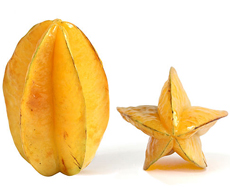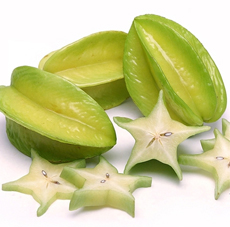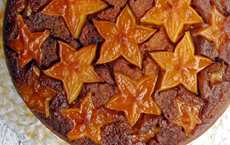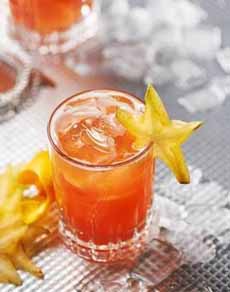TIP OF THE DAY: Starfruit For July 4th
|
Native to Southeast Asia and India, starfruit was brought back to Europe by sailors and traders in the late 1700s. Rare and costly, it became popular among wealthy Europeans. Starfruit was brought to Hawaii by Chinese traders in the late 1800s. Yet, it was introduced to mainland America—Florida—only about 75 years ago. Today the state is the largest producer of American-consumed starfruit. Puerto Rico and Hawaii are the other major producers. These domestic fruits are sold in the U.S., because of import restrictions due to potential pests that often accompany the fruit. The closer you are to the orchard, the better. Like most fruits, starfruit has much more flavor and sweetness when it is allowed to ripen on the tree or vine. Starfruit or carambola (star fruit is an alternate spelling) is the fruit of a species of tree (Averrhoa carambola) that is native to Southeast Asia. The tree is now cultivated throughout the subtropical belt. Named for the five-pointed star shaped slices it yields when cut horizontally, the pale yellow, juicy flesh with a distinctly tropical orange-pineapple flavor contains a few small, flat seeds. If the fruit is greenish, it isn’t fully ripe but will have white flesh and a tart apple flavor and texture. For July 4th, Christmas or any other starry occasion, these “edible stars” can be used just about everywhere, with savory as well as sweet foods. Here are “patriotic” recipes for everything from breakfast to after-dinner drinks. |
 [1] A ripe starfruit (photo S. Masters | Wikipedia).
[4] Starfruit drink garnish, cocktail or mocktail (photo courtesy STK | LA). |
|
|
|
||





